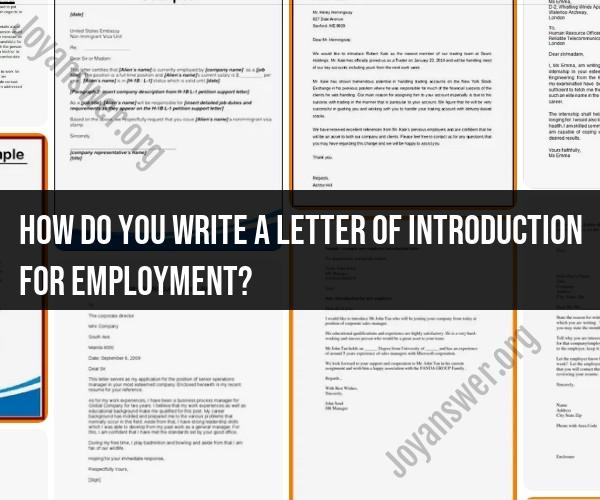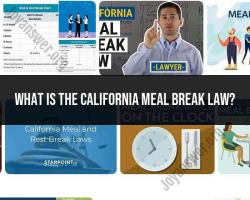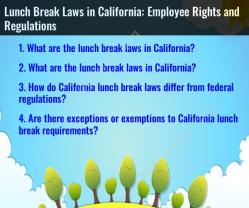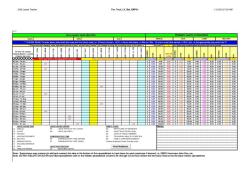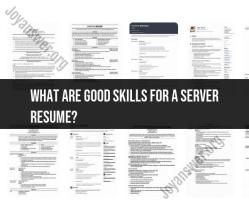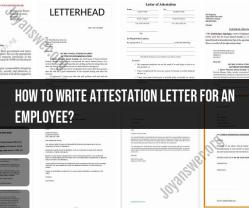How do you write a letter of introduction for employment?
A letter of introduction for employment, often referred to as a cover letter, is a crucial part of your job application. It provides an opportunity to introduce yourself to a potential employer, highlight your qualifications, and express your interest in a specific job. Here are the steps to craft an effective letter of introduction for employment:
Header:
- Include your contact information at the top of the letter, including your full name, address, phone number, and email address. Below your information, include the date of writing.
Employer's Contact Information:
- Include the name, title, company name, and address of the person or organization you are addressing. If you don't have a specific name, you can address it to the company's hiring manager or HR department.
Salutation:
- If you have a specific name, address the recipient with a formal salutation (e.g., "Dear Mr. Smith"). If you don't have a name, you can use a general salutation like "Dear Hiring Manager" or "To Whom It May Concern."
Opening Paragraph:
- Begin your letter with a clear and engaging opening that states the purpose of your letter and the specific position you are applying for. Mention how you learned about the job, whether through a job posting, referral, or other means.
Body of the Letter:
- In the next one or two paragraphs, highlight your qualifications and explain why you are a strong candidate for the job. Be specific about your skills, experiences, and achievements that are relevant to the position. Use examples to demonstrate your capabilities and show how you can contribute to the company.
Tailored Content:
- Customize your letter for each job application. Research the company and the job requirements to understand what they are looking for. Mention why you are interested in working for this specific company and how your skills align with their needs.
Closing Paragraph:
- In the closing paragraph, express your enthusiasm for the opportunity to discuss your qualifications further in an interview. Indicate your readiness for an interview and your flexibility to meet at the employer's convenience.
Formal Closing:
- Use a professional closing such as "Sincerely" or "Yours faithfully," followed by your full name.
Signature:
- If you are sending a printed letter, leave space for your handwritten signature above your typed name. In an email application, your typed name is sufficient.
Additional Information (Optional):
- If you have any relevant attachments, such as a resume or references, mention them in the letter and ensure they are included with your application.
Proofread:
- Before sending, carefully proofread your letter for spelling, grammar, and formatting errors. A well-written, error-free letter is essential to make a positive impression.
Format:
- Format your letter in a professional and easy-to-read manner. Use a standard font, such as Times New Roman or Arial, and keep the content well-organized.
Remember that a letter of introduction should be concise and focused on the employer's needs. It should complement your resume and encourage the employer to review your application more closely. Be sure to follow any specific application instructions provided by the employer, and tailor your letter to match the job requirements and company culture.
How to craft a compelling letter of introduction for employment
Your employment introduction letter is a crucial part of your job application, as it gives potential employers a first impression of you and your qualifications. A well-crafted letter can help you stand out from the competition and increase your chances of getting an interview.
Here are some tips on how to craft a compelling letter of introduction for employment:
- Start with a strong introduction. Your first paragraph should grab the reader's attention and introduce yourself and your career goals. Be sure to mention the specific job you are applying for and why you are interested in the position.
- Highlight your relevant skills and experience. In the body of your letter, highlight your skills and experience that are relevant to the job you are applying for. Be specific and provide examples of your accomplishments.
- Quantify your accomplishments whenever possible. Numbers and metrics can help to make your accomplishments more impressive and believable. For example, instead of saying "increased sales," say "increased sales by 15%."
- Tailor your letter to the specific job and company. Do some research on the company and the specific job you are applying for. This will help you to tailor your letter to highlight the skills and experience that are most relevant to the position.
- Proofread your letter carefully. Before you submit your letter, be sure to proofread it carefully for any errors in grammar or spelling.
Key components and structure of an effective employment introduction letter
A typical employment introduction letter should include the following components:
- Your contact information: Your name, address, phone number, and email address.
- The date: The date you are writing the letter.
- The hiring manager's contact information: The name and title of the hiring manager, as well as the name and address of the company.
- A salutation: A greeting such as "Dear Mr./Ms. [Hiring Manager's name]."
- An introduction paragraph: This paragraph should introduce yourself and your career goals, and mention the specific job you are applying for and why you are interested in the position.
- Body paragraphs: The body of your letter should highlight your skills and experience that are relevant to the job you are applying for. Be specific and provide examples of your accomplishments.
- A closing paragraph: This paragraph should reiterate your interest in the position and thank the hiring manager for their time and consideration.
- Your signature: Your handwritten signature.
Tailoring your letter to the specific job and company
When writing your employment introduction letter, it is important to tailor it to the specific job and company you are applying for. This shows the hiring manager that you are genuinely interested in the position and that you have taken the time to learn about the company.
Here are some tips for tailoring your letter:
- Read the job description carefully. Pay attention to the skills and experience that the employer is looking for. Highlight your own skills and experience that match the job description in your letter.
- Research the company. Visit the company's website and social media pages to learn more about its products or services, culture, and mission. This will help you to write a letter that is specific to the company and its needs.
- Use the company's name throughout your letter. This shows the hiring manager that you are paying attention to detail and that you are genuinely interested in the company.
Tips for making a strong first impression through your introduction letter
Your employment introduction letter is your first chance to make a good impression on a potential employer. Here are some tips for making a strong first impression:
- Be professional and courteous. Use a formal tone and avoid using slang or informal language.
- Be clear and concise. Get to the point quickly and avoid using unnecessary fluff.
- Be enthusiastic. Show the hiring manager that you are excited about the opportunity and that you are eager to learn more about the position and the company.
- Proofread carefully. Make sure that your letter is free of any errors in grammar or spelling.
Common mistakes to avoid in employment introduction letters
Here are some common mistakes to avoid in employment introduction letters:
- Not tailoring your letter to the specific job and company.
- Making grammatical or spelling errors.
- Using too much fluff and not enough substance.
- Not proofreading your letter carefully.
- Being too informal or unprofessional.
By following these tips, you can craft a compelling employment introduction letter that will help you stand out from the competition and increase your chances of getting an interview.
